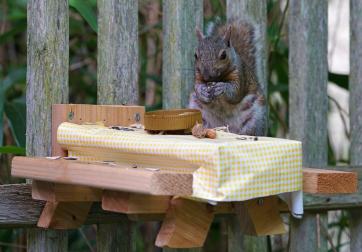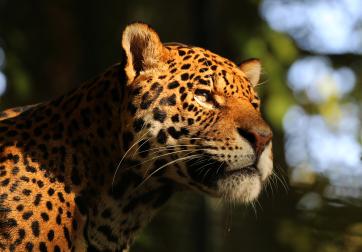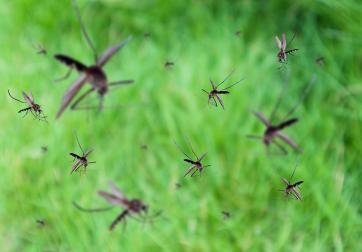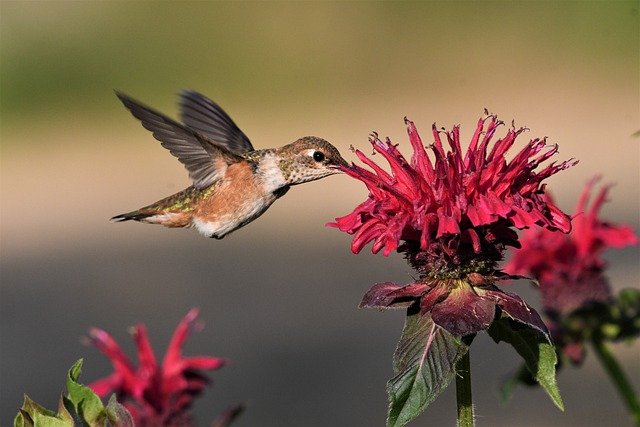
Hummingbirds are some of nature’s most beautiful and enjoyable creatures. The ruby throated hummingbird is usually the only one we see in Oklahoma, but there are as many as 15 varieties in the western United States. The are 330 species overall. Many spend the winter in Central America or Mexico and migrate north to their breeding grounds in the southern United States as early as February. The fist arrivals in spring usually are males. Fewer than two dozen species venture in the United States and Canada and only a few species remain year-round. Only the ruby throated hummingbird nests east of the Mississippi.
There are things you can do to attract them to your yard. Hummingbirds need flowers for nectar and small insects for protein. They are attracted to gnats and small spiders; therefore, don’t use insecticides in your yard if you want to have hummingbirds, butterflies, and birds. Variety in plantings is the key to having hummingbirds, butterflies, and other wildlife. Plant lots of different kinds of plants. The hummingbirds are arriving now so here are a few suggestions on how to attract them to your yard.
Light: Hummingbirds need sun and shade. Be sure to have a mixture of both sunny and shady areas in your garden.
Lots of Levels: Have different levels of vegetation, including tall trees, medium-height trees, shrubs, and lower growing plantings.
Lots of Flowers: Plant flowers that hummingbirds like and that bloom at different times so nectar is available all season. Plant flowers in large groups to attract hummingbirds and provide plenty of nectar. Be sure to have plants that bloom in the fall to provide nectar for migrating hummingbirds. Don’t take your feeders down until two weeks after you have seen a hummingbird in October.
Add Water: Like all birds, hummingbirds need water for drinking and bathing. They love to fly through a fountain that drips water or play in a sprinkler.
Flower Power: Planting flowers is one of the most important aspects of creating a hummingbird haven because hummers have a closer relationship to flowers than any other bird. They lick nectar from blooms and are particularly attracted to red, tubular flowers. Plant the flowers in different areas of your garden because hummingbirds are territorial, and the males will fight to protect their domain.
Hummingbird Feeders: Feeders need to be near flowers because the flowers are what attract them. Keep feeders clean and change nectar at least once a week. Buy feeders that are glass instead of plastic, which may have carcinogenetic material. Make sure there are places for the hummingbirds to perch while feeding. Fill the feeders half-full so you will be inclined to change them more often. Dissolve sugar in a small amount of boiling water and add enough cold water or ice to make a solution of one part sugar and four parts water. Don't ever use red food coloring or honey. If you hang several feeders in the same area, male hummingbirds will fight. Therefore, if possible, hang feeders on different sides of your house.
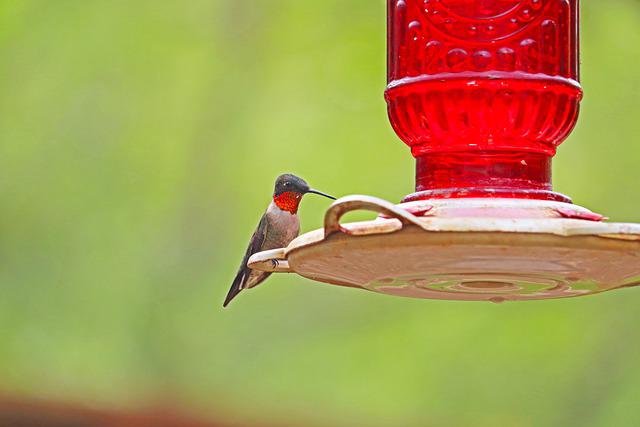
Native Wildflowers: Native wildflowers attract hummingbirds and several good native wildflowers to plant are Autumn sage, cardinal flower (probably the number one flower to attract hummingbirds), columbines, crossvine, Indian paintbrush, liatris, monarda (bee balm), phlox, red morning glory, trumpet vine, trumpet honeysuckle, and wild sweet William.
There are also many beautiful, adapted plants that will attract hummingbirds such as:
Shrubs: abelias, azaleas, beauty bush, currants, gooseberries, hibiscus, honeysuckles, jasmines, and weigelas
Trees: flowering crabapples, chaste tree (Vitex), horse chestnut, locusts, and red buckeye
Vines: cypress vine, honeysuckle, morning glories, scarlet runner bean, trumpet vine, and purple hyacinth bean
Herbaceous Plants: begonias, bleeding hearts, butterfly weed, cannas, carpet bugle, cleome, coral bells (Heuchera), dahlias, foxgloves, fuchsias, gladiolus, hollyhocks, impatiens, lantanas, lilies, pineapple sage, salvias, and Texas sage
Many of the plants that attract hummingbirds also attract butterflies, so you get double the pleasure. Happy hummingbird gardening!
National Garden Clubs, Inc. is a 501(c)(3) organization that aims to promote the love of gardening, floral design, and civic and environmental responsibility. There is a local club near you, click here to find one and join. Subscribe to the NGC’s blog by entering your e-mail here. You do not have to be an NGC member to subscribe. NGC welcomes blog article submissions, e-mail the Blog Administrator at blog@gardenclub.org.

 Board Member Login
Board Member Login Our Store
Our Store Blog
Blog



